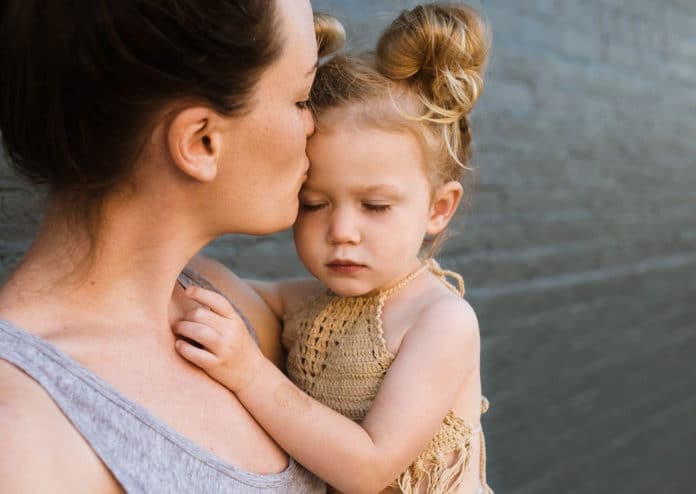A new study by the University of Illinois shed light on how physiological and behavioral reactions coordinate during the interaction between mom and child. It found that when mothers and their children play together, they instinctively respond to each other’s cues.
This positive interaction between mother and child promotes the child’s healthy socioemotional development.
Yannan Hu, a doctoral student in the Department of Human Development and Family Studies at U of I and lead author on the paper, said, “Our study measures real-time physiological and behavioral coordination between mothers and children while they’re interacting with each other. Researchers consider physiological synchrony beneficial for the child’s socioemotional development. But our study is one of the first to link it to behavioral synchrony.”
“Overall, when mothers and children are coordinated at the behavioral level – they work together, take turns, and share positive affect – the child’s physiological activity follows the physiological changes in mom.”
Scientists wanted to determine the temporal pattern of real-time physiological coordination or its associations with global levels of mother-child behavioral coordination. For this, they used data from 110 mothers and their preschool-aged children across two play tasks.
All participants were invited for a session of interactive play. They first worked together for five minutes on solving a 3-D puzzle. Then, they switched to “pet doctor” toys and stuffed animals for another five minutes of pretend play.
During sessions, both mother and child had to wear wireless electrodes so that scientists could measure their parasympathetic response through high-frequency changes in heart rate, known as respiratory sinus arrhythmia (RSA). They also recorded the play sessions and trained observers coded mother-child behavioral coordination, including shared smiles and laughter, taking turns, and responding to each other’s social cues.
Scientists noted, “Positive changes in RSA indicate that mothers and children are socially engaging and moving toward each other, while decreases in RSA are typically observed when confronting a stressor or problem. Thus, increases in the mother’s RSA are likely to indicate increasing engagement with the child, who then reciprocates in turn.”
Hu said, “We measured in real-time whether the mom and child can coordinate. This tells us about their interactions above and beyond the mom’s parenting behavior. It not only matters how parents treat their children. Children also need to be responsive to their parents’ cues for the parent and child to establish a coordinated interaction.”
Nancy McElwain, HDFS professor and co-author on the paper, said, “Another strength of this study is the focus on mother-child interaction during a positive play context. Research often focuses on how parents help children regulate negative emotions and behaviors, and this is important. It is equally important to understand how parents and children work together to maintain or increase shared positive interactions and emotions. Play provides an ideal context to understand these positive processes.”
The study highlights the importance of dyadic behavioral processes for mother-child physiological coordination. It can also help practitioners spot potential problems for early intervention by identifying less beneficial behaviors, such as interrupting each other, failing to take turns, or ignoring each other’s social cues.
Journal Reference:
- Yannan Hu, Nancy L. McElwain et al. Mother-child mutually responsive orientation and real-time physiological coordination. DOI: 10.1002/dev.22200
